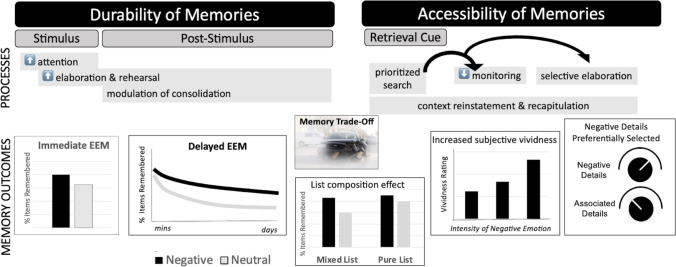Fig. 1.
Power of Negative Memories. Processes that unfold during the experience of a negative event, and in the seconds, minutes, and hours that follow, can lead these memories to be durable. Emotional enhancements of memory (EEM) can occur when memory is tested after only a short delay (immediate EEM), and these enhancements can grow as the delay interval increases (delayed EEM). Processes that unfold at retrieval also can increase the likelihood that a retrieval cue brings a negative memory to mind and that the memory is subjectively vivid. Often, what is prioritized at retrieval are the negative details of an event, while the associated contextual details may not be brought to mind. Of course, the processes that unfold at each phase of memory interact with one another, and some of the selectivity of negative memories, such as the tendency for negative memories to retain some details but not others, or for the EEM to be stronger in mixed-lists than pure-lists, likely reflect the way that processes span across these phases. All figures show mock data; see text for description of related studies

